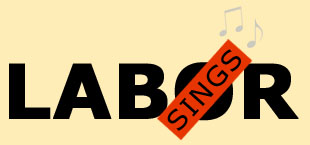|
|
|

Like the civil rights movement of the 1960s, which was galvanized by a revised version of a 1903 hymn, "I'll Overcome Someday," the American labor movement has made abundant use of songs during the periods of its greatest activity.
While labor songs had existed throughout the 19th century, it was the Industrial Workers of the World (IWW) that pioneered in using both popular song melodies and familiar religious tunes to spread the twin messages of class struggle and the need of workers to organize. The IWW's "Little Red Song Book" was small enough to fit into a worker's shirt or back pocket, but it packed a powerful punch with songs by Joe Hill, Ralph Chaplin and others.
During the Great Depression and
the organizational drives that followed in the 1930s and '40s,
labor's voice found expression in songs like Maurice Sugar's
"The Soup Song" and "Sit Down," which hailed the sit-down
strikes that aided the CIO's organizational efforts. The same
period witnessed the birth of the Almanac Singers, formed
in 1941 by Pete Seeger, Lee Hayes and Millard Lampell, and
entrance upon the workingclass musical scene of Woody Guthrie.
Songs like "Hold the Fort," "Which Side Are You On?," "We're
Going to Roll the Union On," "Union Maid" and the ever-popular
"Solidarity Forever" have become part of the musical heritage
that has helped to lift up and energize our American labor
movement.
Sources
|
|

